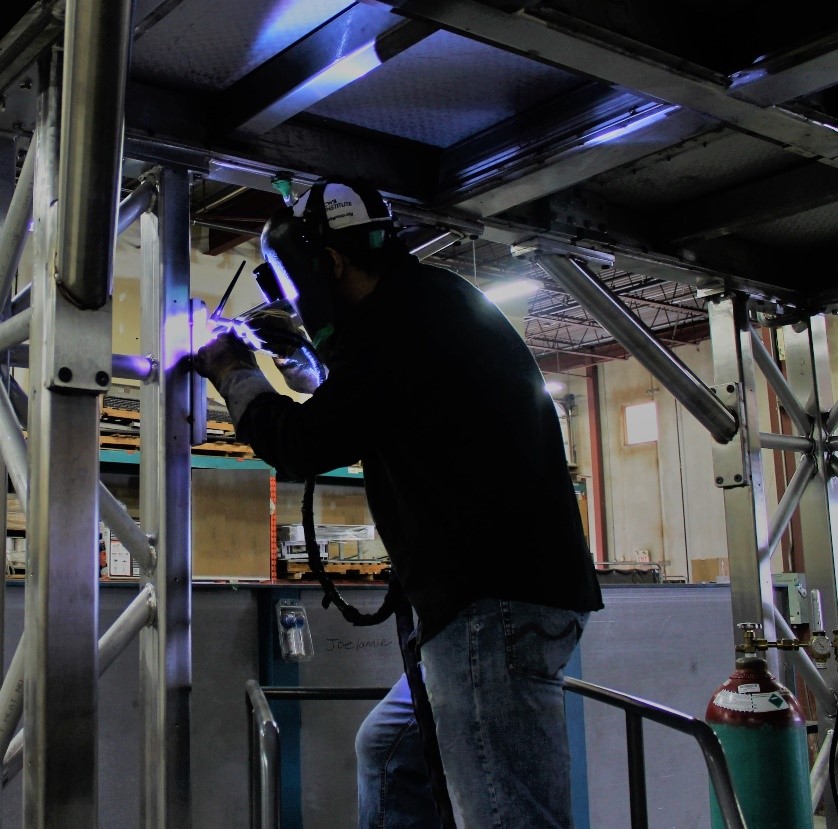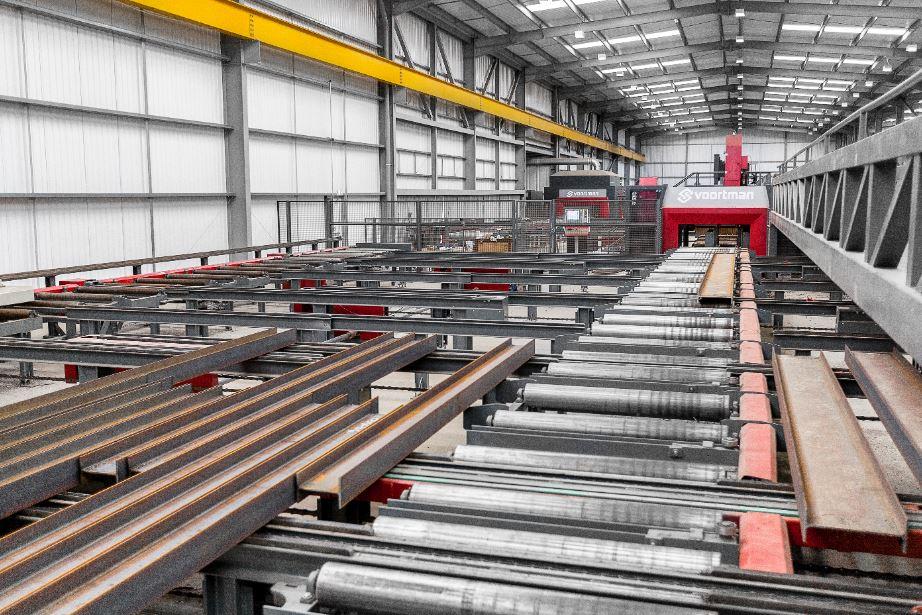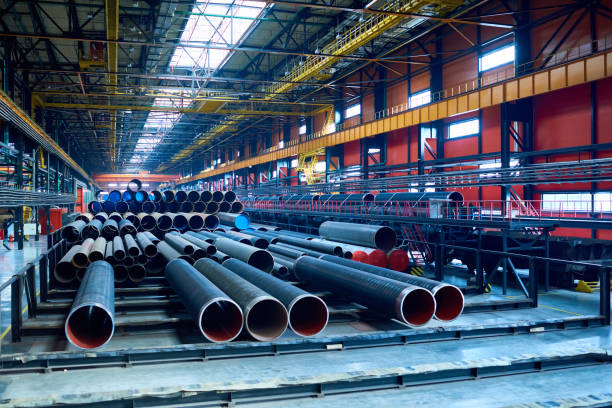Innovative Trends in Steel Manufacture: Enhancing Durability and Precision
In the realm of steel fabrication, the quest of durability and accuracy has actually resulted in a wave of ingenious fads that are improving the sector. From developments in welding technologies to the assimilation of robot automation in construction procedures, the landscape of steel manufacturing is developing swiftly. High-strength alloy advancement, combined with the application of 3D modeling and simulation software program, is pushing the borders of what is attainable in regards to architectural integrity and accuracy. Furthermore, the expanding focus on lasting methods in steel production is not just driving effectiveness yet also fostering a more environmentally aware strategy to manufacture. These patterns are not simply forming the here and now but likewise preparing for the future of steel manufacture, guaranteeing more improvements in toughness and precision.
Advanced Welding Technologies
In the world of steel fabrication, the adoption of cutting-edge welding modern technologies has actually dramatically changed the sector's technique to accomplishing superior top quality and precision in structural welds. Advanced welding technologies, such as laser light beam welding and rubbing stir welding, have actually emerged as game-changers in the area. Laser light beam welding employs a concentrated laser beam of light to sign up with steel components with exceptional accuracy and rate, making it suitable for slim products and elaborate styles. On the other hand, friction stir welding produces exceptionally strong bonds by mechanically intermixing the particles of the products at the joint, getting rid of the need for thawing the metal. These innovations provide numerous advantages, including minimized heat-affected zones, very little distortion, and improved mechanical homes in the bonded joints. By leveraging these sophisticated welding techniques, steel producers can raise the resilience, toughness, and accuracy of their structural welds, meeting the increasingly demanding needs of contemporary building projects.
Robotic Automation in Construction
Embracing robot automation has actually become a keystone of modern-day steel manufacture methods, boosting and enhancing procedures efficiency throughout the sector. Robots are reinventing the method steel components are produced, supplying unparalleled accuracy and rate while reducing human mistake. These automated systems can manage repetitive jobs with constant accuracy, bring about better output.
One trick advantage of robotic automation in steel manufacture is the ability to function all the time without fatigue, considerably boosting production outcome. This constant procedure decreases downtime and increases job timelines, eventually conserving costs for producers. Furthermore, robotics can be configured to do complex tasks that may be challenging or harmful for human employees, improving safety in the workplace.
Moreover, robotic automation allows smooth integration with various other digital technologies, such as computer-aided layout (CAD) software program and Web of Points (IoT) systems (Alpha reo). This interconnected strategy enhances communication in between different phases of construction, enhancing workflows and guaranteeing real-time tracking and control. As the steel manufacture industry remains to advance, robot automation stands out as a transformative force driving effectiveness and precision in making processes

High-Strength Alloy Development
The innovation of high-strength alloy growth in steel fabrication is reshaping the market's method to boosting product durability and performance. High-strength alloys are crafted to show premium mechanical properties, such as enhanced tensile strength, durability, and deterioration resistance contrasted to typical steel grades. By integrating these sophisticated alloys into fabrication processes, manufacturers can create parts that stand up to higher stress levels and rough atmospheres, resulting in more reliable and sturdy end products.
One key advantage of high-strength alloy growth is the capability to reduce product thickness without endangering architectural integrity. This not just results in lighter-weight parts however additionally adds to cost financial savings and enhanced efficiency in manufacture and assembly procedures. The enhanced strength-to-weight proportion of these alloys enables for the style and building and construction of structures with higher load-bearing capabilities while lessening overall weight.
3D Modeling and Simulation Software
Improvements in steel fabrication procedures have actually been dramatically driven by the assimilation of cutting-edge 3D modeling and simulation software application tools. These devices permit makers to produce comprehensive virtual versions of their tasks, enabling them to imagine the final item with accuracy prior to any type of physical work starts.

Sustainable Practices in Steel Production
Integrating lasting methods into steel manufacturing procedures is important for reducing ecological influence and making sure long-lasting resource accessibility. One essential lasting practice is the adoption of energy-efficient innovations to minimize greenhouse gas emissions throughout the steel manufacturing process. This consists of utilizing renewable power resources, such as solar or wind power, to power steel plants and executing energy-efficient devices to optimize energy usage.
Another essential element of sustainable steel production is the responsible sourcing of basic materials. This involves making certain that the iron ore and various other sources utilized in steelmaking are obtained from honest and eco-friendly resources. By advertising openness in the supply chain and adhering to stringent ecological requirements, steel manufacturers can lessen the adverse Web Site impacts of resource extraction on regional ecological communities and communities.

Verdict
In final thought, the cutting-edge patterns in steel fabrication such as sophisticated welding technologies, robot automation, high-strength alloy advancement, 3D modeling and simulation software application, and sustainable techniques are improving the resilience and accuracy of steel items. These innovations are transforming the steel manufacture industry by improving efficiency, quality, and sustainability. It is clear that the future of steel fabrication exists in accepting these cutting-edge innovations to meet the demands of modern-day building and production sectors.
In the world of steel manufacture, the search of resilience and accuracy has led to a wave of innovative trends that are improving the industry.In the world of steel construction, the adoption of cutting-edge welding technologies has considerably revolutionized the market's strategy to attaining remarkable high quality and precision in architectural welds. As the steel construction sector proceeds to advance, robot automation stands out as a transformative pressure driving performance and accuracy in producing processes.
In addition, recycling and recycling steel scrap and waste materials play a significant duty in boosting the sustainability of steel production. metal fabrication melbourne.In final thought, the innovative fads in steel fabrication such as sophisticated welding modern technologies, robot discover here automation, high-strength alloy growth, 3D modeling and simulation software application, and lasting practices are improving the resilience and accuracy of steel items